Unit 2 Meiosis
1/15
There's no tags or description
Looks like no tags are added yet.
Name | Mastery | Learn | Test | Matching | Spaced |
|---|
No study sessions yet.
16 Terms
homologous chromosomes
Pair of chromosomes that are SIMILAR size and appearance. Contain the same genes but may have different alleles.
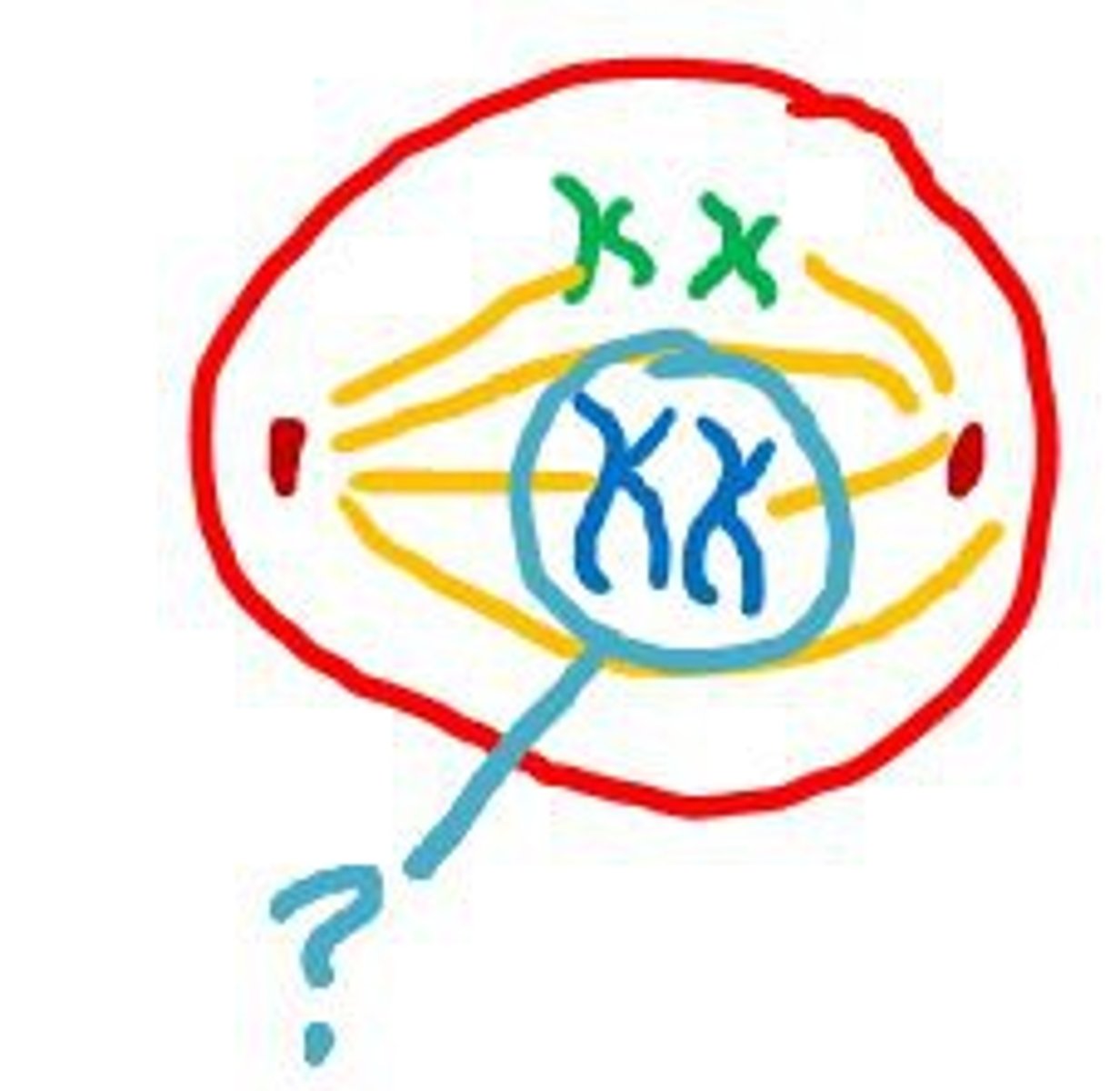
crossing over
Exchange of genetic material between homologous chromosomes during prophase I of meiosis

haploid cell
A cell containing only ONE set of chromosomes (n). In mammals containing 23 chromosomes. Sperm and egg cells.
diploid cell
A cell containing TWO sets of chromosomes (2n), one set inherited from each parent. In mammals, containing 46 chromosomes.
meiosis
A type of sexual cell division that results in FOUR daughter cells each with HALF the number of chromosomes of the parent cell; results in gamete formation.
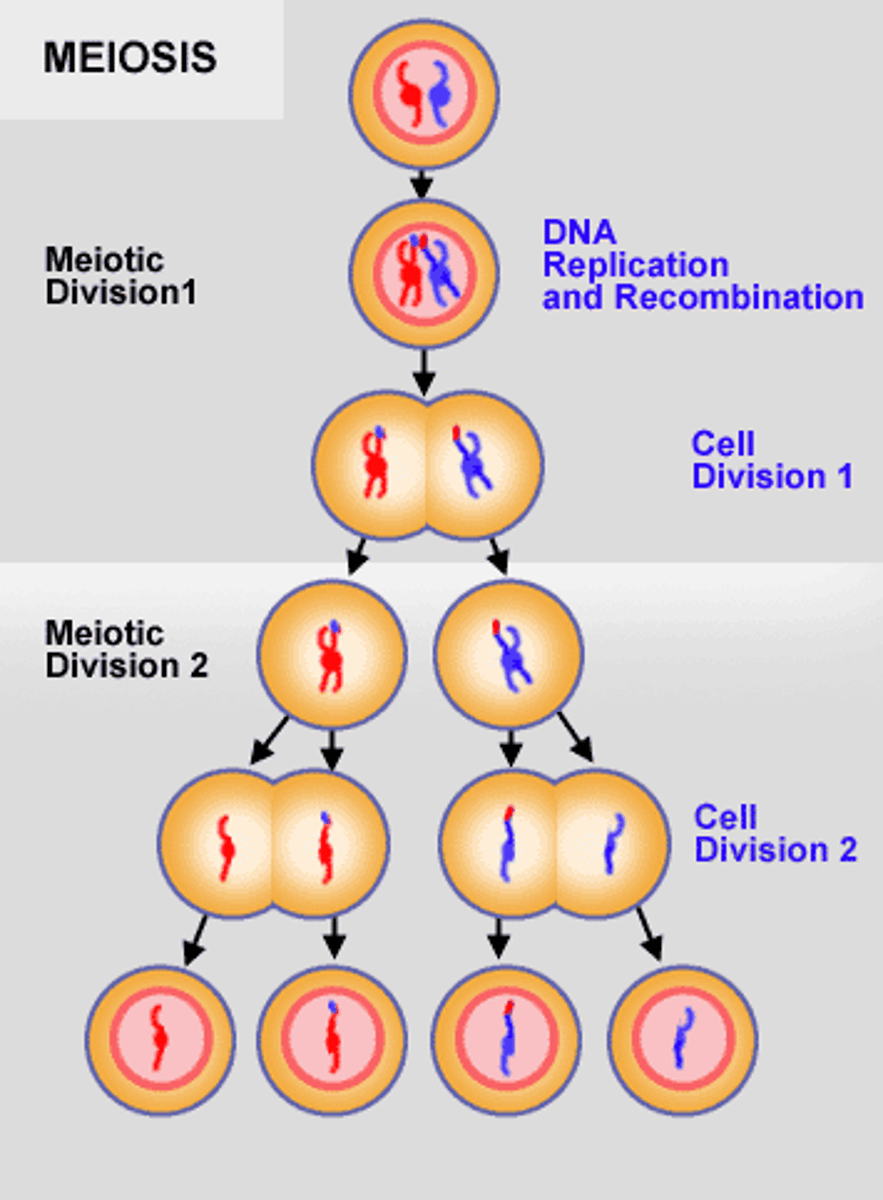
mitosis
Cell division in which the nucleus divides into TWO daughter cells containing the SAME number of chromosomes which are EXACT copies of the parent.
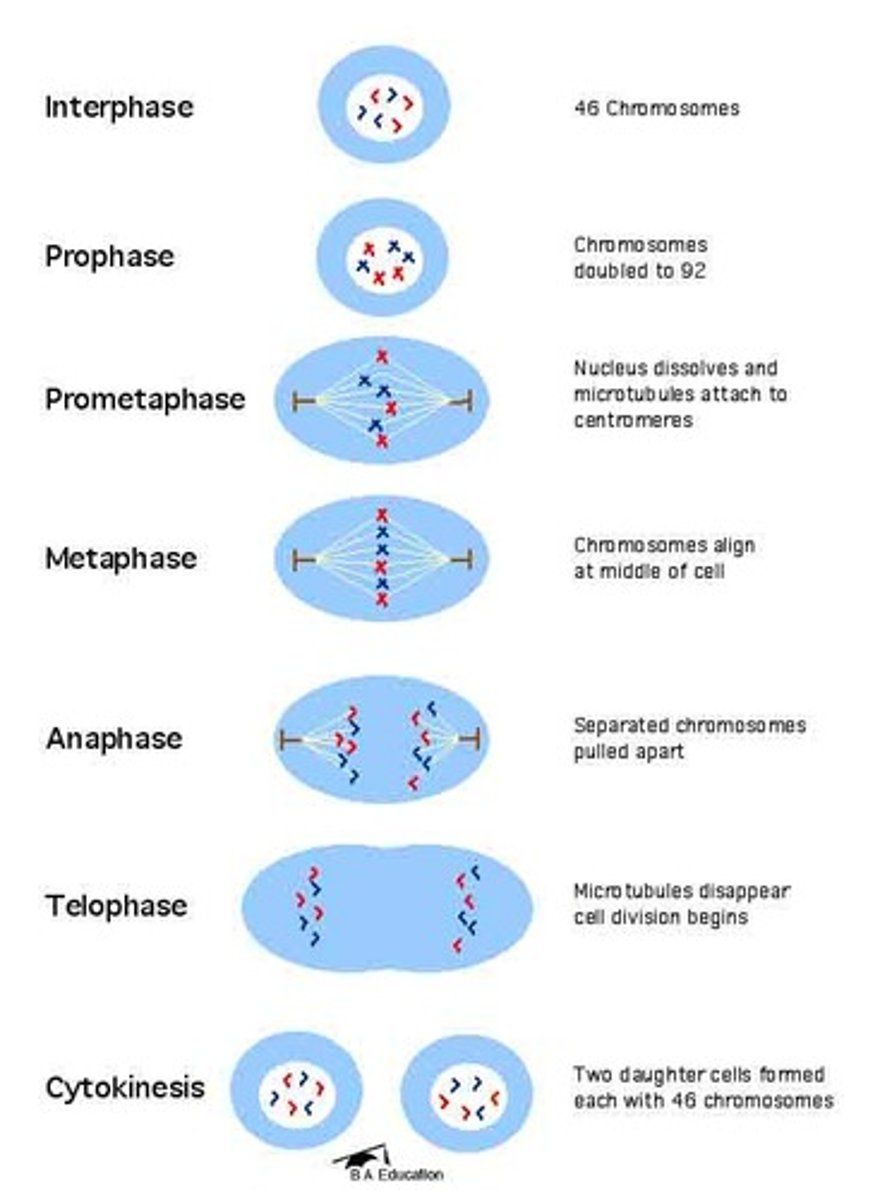
mutation
Change in a DNA sequence that affects genetic information
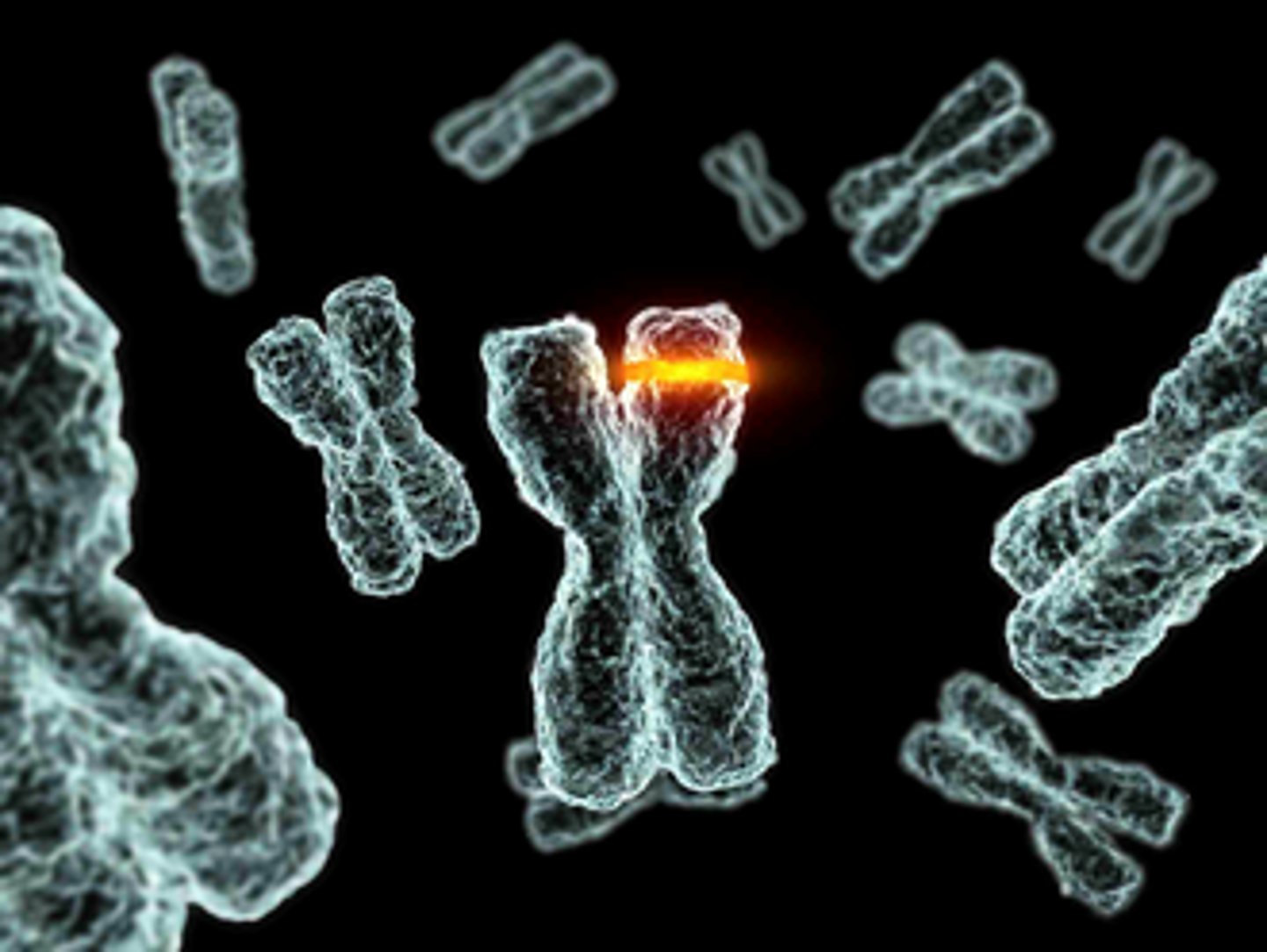
genetic variation
Differences among individuals in the composition of their genes or other DNA segments
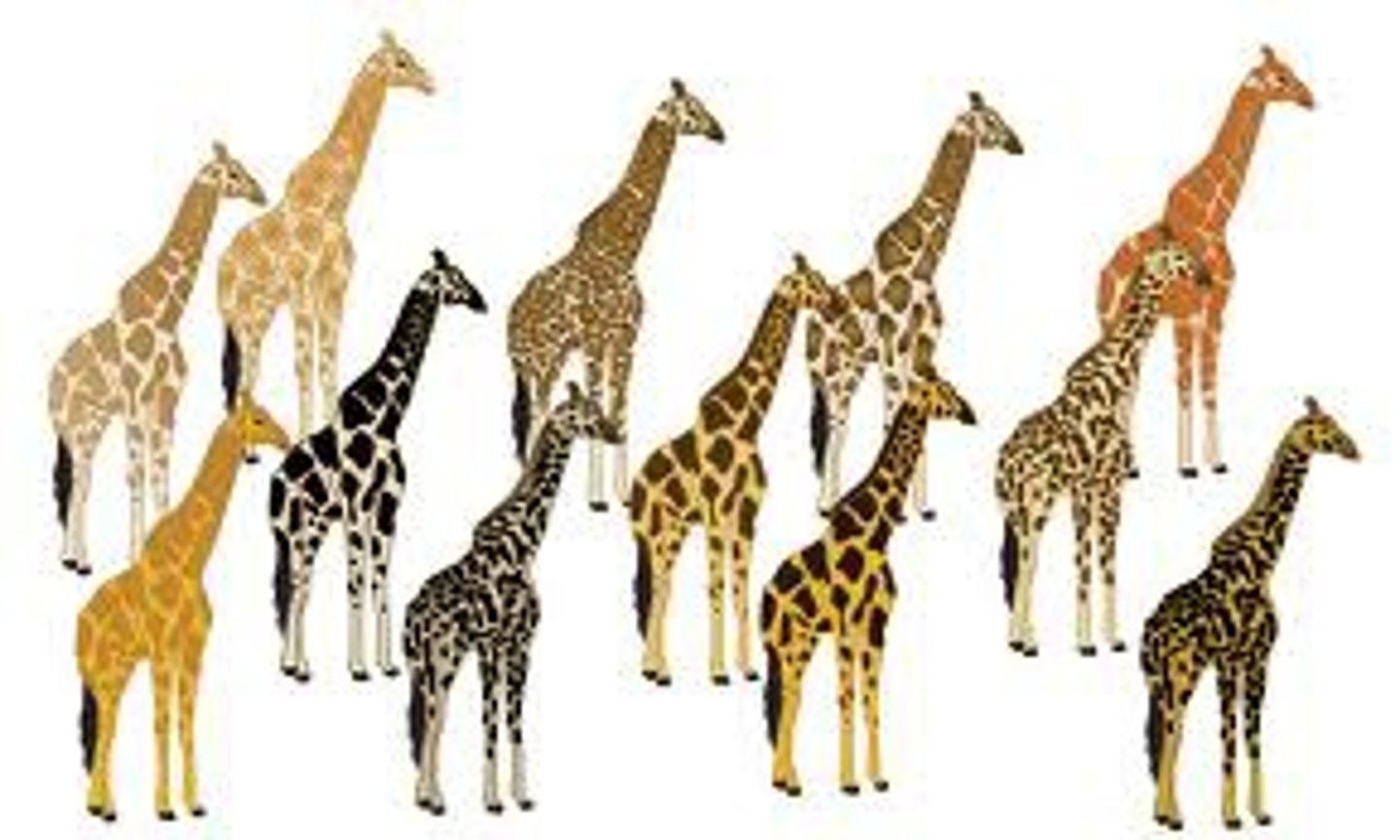
somatic cells
Any cells in the body other than reproductive cells
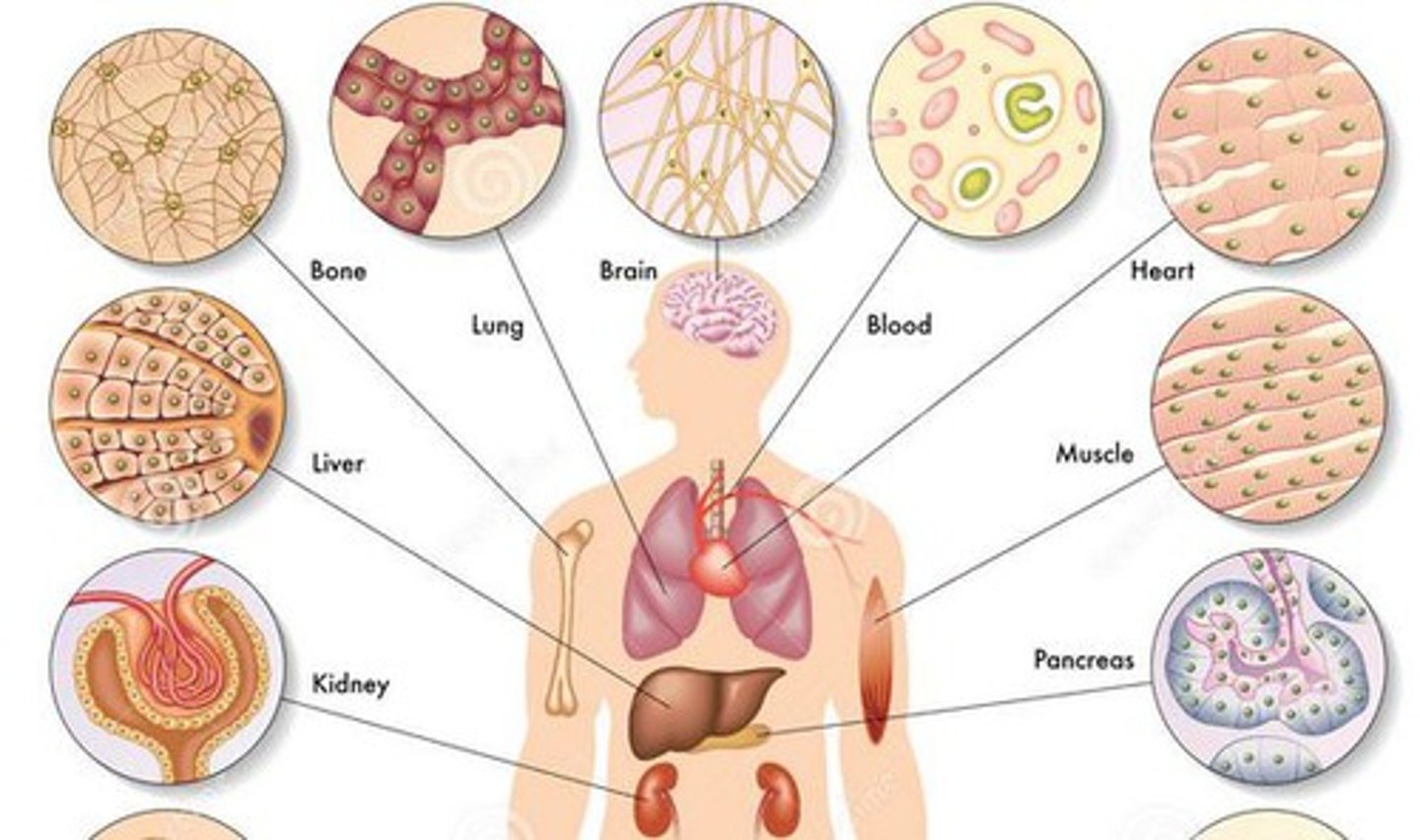
gametes
Sex cells (sperm and egg)
haploid
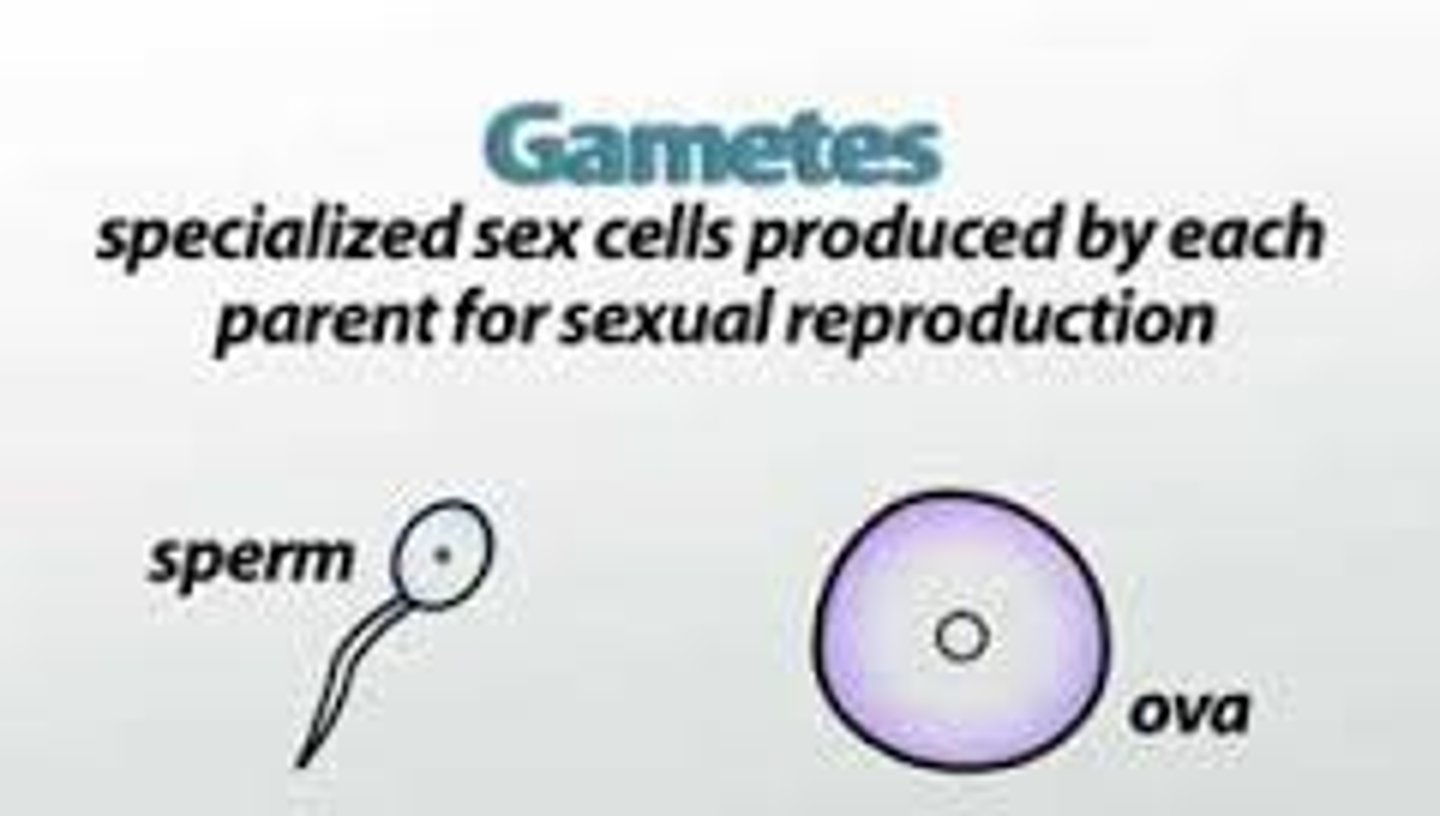
chromosome
A threadlike, gene-carrying structure found in the nucleus. Each chromosome consists of one very long DNA molecule and associated proteins.
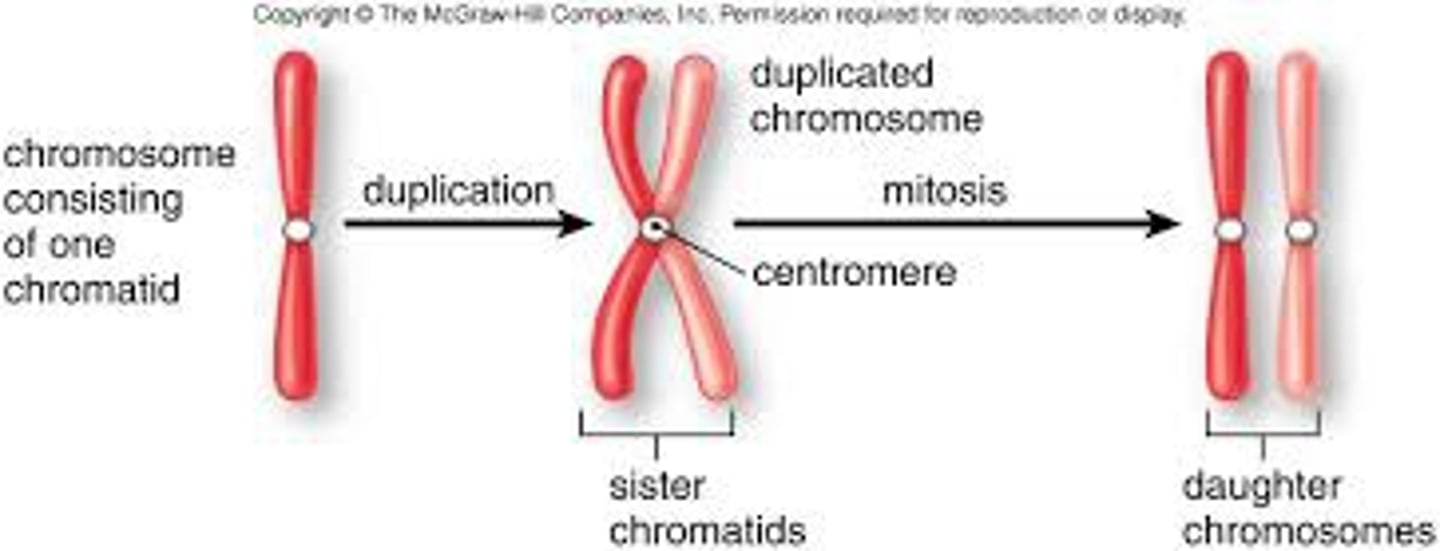
chromatid
One of two identical "sister" parts of a duplicated chromosome
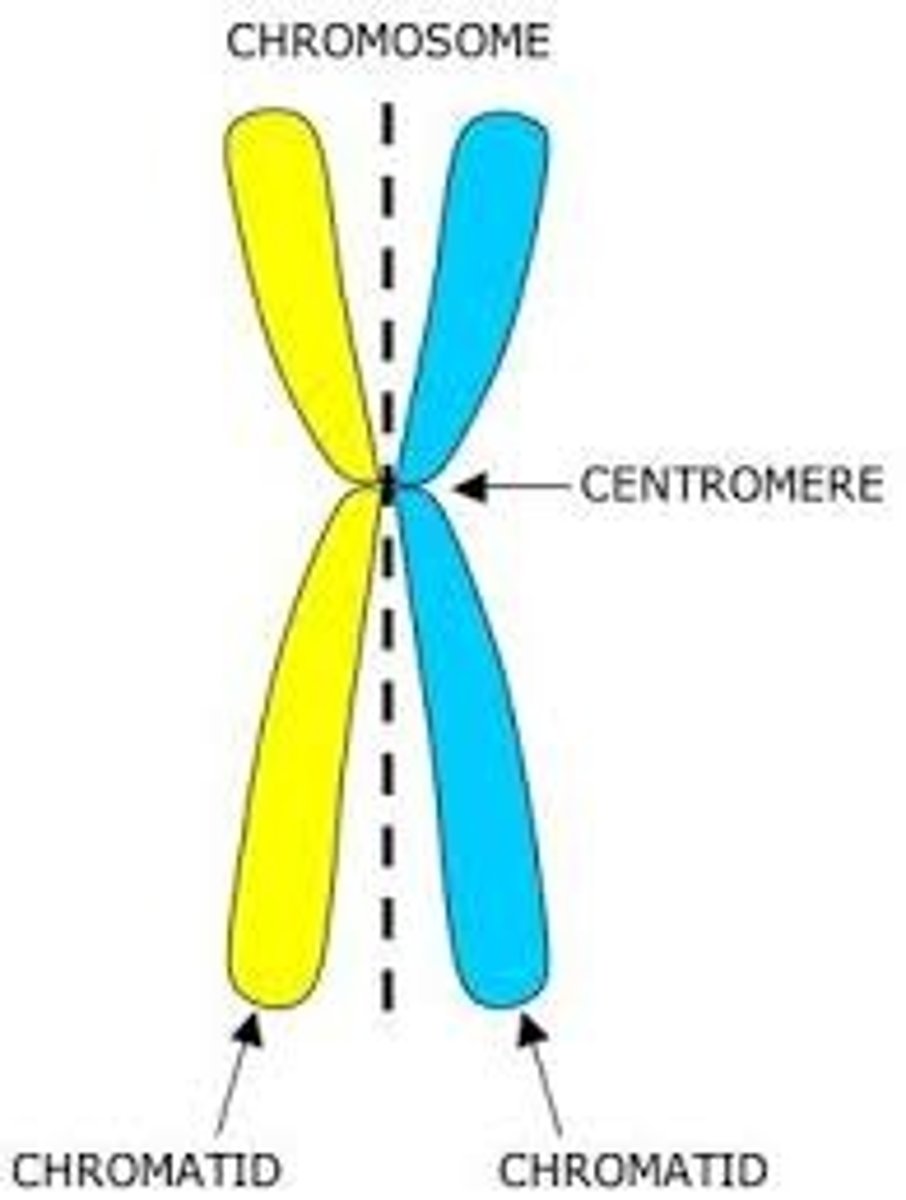
centromere
The area where the chromatids of a chromosome are attached

karotype
The arrangement of the homologous pairs of chromosomes from tallest to shortest.

male karyotypes have ______________
One X and one Y chromosome

female karyotypes have ______________
Two X chromosomes
